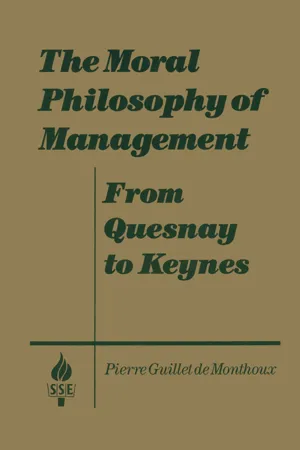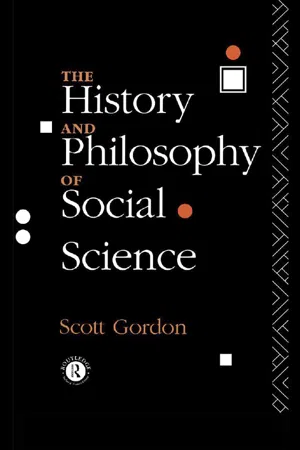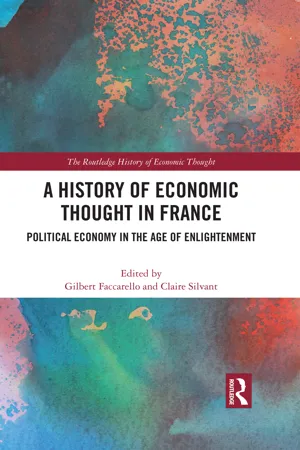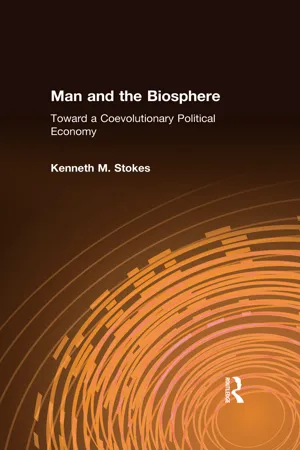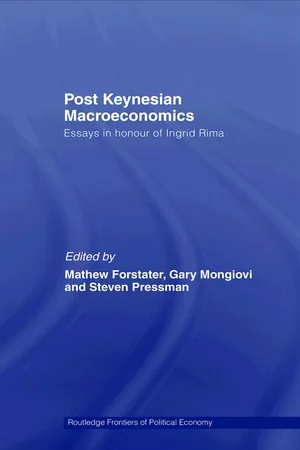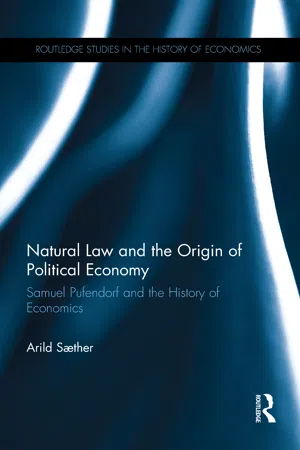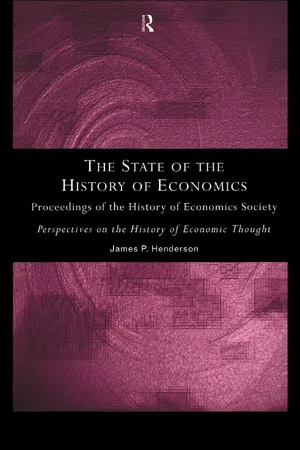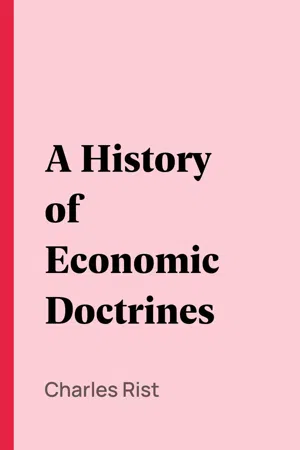History
Francois Quesnay
Francois Quesnay was an influential French economist and physician during the 18th century. He is best known for his role as the leader of the Physiocrats, a group of economists who advocated for free trade and the importance of agriculture in the economy. Quesnay is particularly renowned for developing the concept of the "Tableau Économique," which illustrated his ideas about the circulation of wealth in a nation.
Written by Perlego with AI-assistance
Related key terms
Related key terms
1 of 4
Related key terms
1 of 3
12 Key excerpts on "Francois Quesnay"
- eBook - ePub
The Moral Philosophy of Management: From Quesnay to Keynes
From Quesnay to Keynes
- Pierre Guillet de Monthoux(Author)
- 2016(Publication Date)
- Routledge(Publisher)
To read Francois Quesnay (1694—1774) is to receive a lesson in what business economics is really about, its social function, and the degree of concreteness with which it should be pursued. Francois Quesnay was medical adviser to Louis XV at Versailles. His name is immediately linked by modern economists with the work Tableau é conomique. which was printed on the king's press in 1758. The ideas it contained were apparently very popular, since it was reported in the physiocrats' journal, Eph é m é rides du Citoyen. in 1767 that it was no longer possible to obtain copies (the publication was sold out!). It was, indeed, the circle around Doctor Quesnay who were busily engaged with interpreting and spreading his earlier ideas concerning the input/output tables on "la distribution des depenses annuelles d'une nation agricole." the distribution of a nation's annual agricultural costs. The Tableau was not Quesnay's first economic work and, from the point of view of concrete economics, by no means the most important. That the Tableau remains in the classical memory of modern economists says more about the latter's love for abstraction rather than Quesnay's more generally practical disposition. In the middle of the 1750s two articles appeared that contained the concrete program of the Physiocrats. They were published in Diderot's Encyclopedic in which Rousseau himself, in an article on economics, set out the basic idea that later became Le Contrat social. Quesnay's two articles are titled " Fermiers " (Farmers) and " Grains " (Grain). The first contains the Physiocrats' "theory of the firm," or rather "of the farm," dealing with the productivity of the farm as an enterprise. The second describes the necessary preconditions for the profitability of the farm as a business—the level of prices and sales of grain. The articles were not concerned with any dry systematization of already known facts but were rather concrete analyses seeking to convince and influence - eBook - ePub
- H. Scott Gordon(Author)
- 2002(Publication Date)
- Routledge(Publisher)
This weakness alone would have made its life short, since, by the eighteenth century, scientifically-minded persons were far more interested in participating in the discovery of new truth than in propagandizing for truths already known. Adam Smith visited France in the mid-1760’s and met the Physiocrats. His own economic ideas may have been influenced by them but he spoke slightingly of them in the Wealth of Nations. At any rate, it was Smith’s book, published in 1776, that proved to be the main source of inspiration for the development of what is now known as ‘classical economics.’ The work of Quesnay and his followers virtually disappeared from sight until the mid-nineteenth century, when some economists, most notably Karl Marx, began to retrieve them from the discard box of intellectual history. It is questionable whether the specific model of economic processes diagrammed in Quesnay’s Tableau should be regarded as a significant contribution to the development of economic theory, but the conception of a model of the economy as a whole, whatever its specifics, is in itself a notable step in the evolution of scientific economics. Beyond this general point, there are certain features of Physiocratic theory, and its application, that are significant as foreshadowing later developments in economics. These will now be briefly noted. 1. The concept of spontaneous order The most important idea of the Physiocrats was that economic processes are governed by laws of nature in such a way that the economic world, like the natural world, is, or can be, a system of spontaneous order: not man-made or man-governed. This ran counter to much of the economic thinking of the eighteenth century, which viewed the economy as something that required constant management and extensive regulation by the state - eBook - ePub
- Peter C. Dooley(Author)
- 2005(Publication Date)
- Routledge(Publisher)
5 François Quesnay A brief life of François Quesnay The early life of François Quesnay (1694–1774) has been differently reported by various authorities. Auguste Oncken (1965 [1888]) published biographical sketches of Quesnay by Mirabeau, Fouchy, Madame du Hausset and others. He noted that Lord Crawford thought Quesnay was born in the village of Ecquivilly, in the Isle de France, the son of a labourer. The consensus follows the version of the count d’Albon, who claimed that Quesnay was born in Méré near Montfort-Lamaury, the son of an advocate. His father was also apparently the proprietor of a small estate. All the authorities agree that Quesnay spent his early years in rural France. Legend has it that he never attended school and did not learn to read until age eleven, about which time, or shortly thereafter, he became a voracious reader. He mastered Latin and Greek and read Plato, Aristotle and Cicero, which gave him the economic and philosophic foundations that the modern world inherited from classical antiquity. 1 While still a teenager, Quesnay began studying to be a surgeon, which was still a sort of barber and distinct from the profession of medicine. He established his practice of surgery in Mantes, where he moved with his wife. Success brought him recognition and eventually appointment as secretary to the Parisian Academy of Surgery. From surgery, he turned to medicine and acquired his doctorate, which opened a broader field of study and practice. He became an expert on the circulation of the blood and published on the practice of bleeding. The circulation of the blood may have suggested to him the circulation of money and commodities in the economy. 2 The title of his book, Essai physique sur l’économie animale (1736), implied a similar analogy to economics. He also published books on gangrene and fevers. It is, perhaps, no coincidence that Sir William Petty and John Locke were also physicians - eBook - ePub
A History of Economic Thought in France
Political Economy in the Age of Enlightenment
- Gilbert Faccarello, Claire Silvant(Authors)
- 2023(Publication Date)
- Routledge(Publisher)
5 François Quesnay and PhysiocracyThierry Demals and Philippe SteinerDOI: 10.4324/9780429202414-5The current of thought called physiocracy is closely tied to the name of François Quesnay (1694–1774), a former surgeon, then physician, who turned self-taught economist in the middle of the eighteenth century. However, physiocracy cannot be limited to Quesnay himself since many authors gathered around him from the 1750s and into the 1760s: this group of devotees and disciples developed the economic and political ideas that were at the core of the physiocratic movement, in France and in many other European countries. At that time, these authors were known as the “économistes” or the “philosophes économistes”.1. Setting the stage
The classical account of this movement can still be found in Georges Weulersse’s series of books, covering the movement’s history from the first papers written by Quesnay in the Encyclopédie, ou Dictionnaire raisonné des sciences, des arts et des métiers, to the first phase of the French Revolution (Weulersse 1910 , 1950 , 1959 , 1985 ). However, in this chapter, we focus on a shorter period of time: the two initial stages of the development of the school to which Loïc Charles and Christine Théré have recently drawn attention (2008, 2011, 2019).During the first stage, Quesnay was the key character in the sense that he personally encouraged other people to spread his own ideas, since as a member of the royal Court in Versailles – he was the personal physician of Madame de Pompadour, the favourite of King Louis XV – he thought it much better to publish his ideas under the name of other people. Quesnay created a “writing workshop” in which he explained his economic thinking to the members of his group and carefully supervised their writings. At this time, the group was small: Victor Riqueti (1715–1789), marquis de Mirabeau, Pierre Samuel Du Pont (1739–1817) and Louis-Paul Abeille (1719–1807); together with some contributors who were relatively minor, but important with regard to specific topics, such as husbandry (Henry Pattullo, 1725–1784) or calculation (Charles de Butré, 1724–1805). Pierre-Paul Le Mercier de la Rivière (1719–1801) joined this workshop after coming back from his Intendance in the French West Indies. During this first period, intellectual activity was limited and only a few texts were produced, mainly theoretical works: besides Quesnay’s own works on the various versions of the Tableau Économique (1758–60), the workshop produced Mirabeau’s books (Théorie de l’impôt, 1760, and Philosophie rurale, 1763 with an important contribution by Quesnay); Du Pont’s essay on the international grain trade (De l’importation et de l’exportation des grains, 1764); and Le Mercier de la Rivière’s book (L’ordre naturel et essentiel des sociétés politiques - eBook - ePub
- Joseph J. Spengler(Author)
- 2013(Publication Date)
- Routledge(Publisher)
Chapter V Quesnay and the PhysiocratsMEMBERS of the physiocratic school, whose doctrines were ascendant in the third quarter of the eighteenth century, were pre-eminent among French writers who emphasized the basic importance of agriculture, and the need of rehabilitating the French agriculture.1 Their economic doctrines have been described, on the one hand, as embodying the first unified, closed, and logical system of economic theory,2 the first complete doctrine of competition,3 an effective counterblast to mercantilist pecuniary doctrines,4 and the eighteenth-century emphasis upon the need to augment production;5 on the other hand, as constituting a rationalization, conscious or unconscious, of a set of commercial and fiscal policies especially suited to serve the interests of the rising bureaucratic and bourgeois landowning class.6IWhether or not the physiocrats developed their doctrines to protect the interests of landholding classes,7 the physiocratic population doctrines, in especial those of Quesnay,8 are understandable only in light of their conception of the nature of production and of the role of agriculture in mid-eighteenth-century France. Of the various possible types of useful and necessary economic activity, the physiocrats held only agriculture and fishing to be capable of yielding a net product, or net return above all operating expenses.9 Agriculture, the physiocrats believed, was the primary industry of France and the sole industry on which the economy of any large country could be founded;10 but they were convinced that it was in an exceedingly depressed state and was suffering in particular from a deficiency of capital and from a consequent dearth of labor.11 Quesnay supposed, as Landry infers,12 that the failure of the relatively high yield on capital invested in agriculture to attract enough capital to reduce this rate to parity with the rate of return obtainable in other industries was due to the lack of access of agriculture to the sources of capital.13 Therefore, he favored all conditions (consistent with competition)14 that tended to reduce the cost of production, especially in agriculture, or to elevate the demand for grain and increase its exchange value (e.g., freedom of trade in grain, in-as much as France, in his opinion, produced a surplus; the diversion of the income of the wealthy to the purchase of agricultural products; and the augmentation of the effective demand of the masses for provisions); for the increased sale value of agricultural products would swell the gross and net revenue of agriculture, increase the supply of capital available for investment in agriculture, and thus stimulate its development. In consequence of the increase in the gross and net revenue of agriculture, the demand for nonagricultural products would increase and bring about the very population growth which an agricultural surplus, such as then existed in France, was unable per se to bring about.15 - eBook - ePub
Man and the Biosphere:
Toward a Coevolutionary Political Economy
- Kenneth M. Stokes(Author)
- 2016(Publication Date)
- Routledge(Publisher)
86The Tableau Économique
Turgot, a confederate of Quesnay, referred to the circulation of wealth in a manner not unlike Hobbes. The emphasis on a circular-flow model can be traced to Thomas Hobbes's use of William Harvey's 1658 model of the circulation of "nutrients" in the blood as a physiological analogy for the material foundation of the commonwealth.87 Turgot wrote that the circulation of wealth was one "whose continuity provides for the life of the political body just as the circulation of blood provides for the life of the animal body."88François Quesnay's most "original" contribution, the Tableau Économique, which firmly established the physiocratic school, was published in 1758. In this work Quesnay formulated what later became elements of economic liberalism and concluded that all wealth—conceived as a creation of physical productsoriginates in the then dominant activity of the time, namely, agriculture. In his Maxims, Quesnay wrote: "That the sovereign and the nation should never lose sight of the fact that land is the unique source of wealth, and that it is agriculture which causes wealth to increase."89The Physiocrats' main aim was to explain the operation of the basic determinants of the general level of economic activity. For this purpose, they believed that it was useful to conceive economic activity as taking a circular form. In this circle of economic activity, production and consumption appeared as mutually interdependent variables, whose action and interaction in any economic period, proceeding according to socially determined laws, laid the basis for a repetition of the process in the same general form in the next economic period. The Physiocrats then endeavored to discover some key variable within this circular movements that could be regarded as the basic factor causing an expansion or contraction in the "dimensions" of the circle, i.e., in the general level of economic activity. Meek notes that the variable they hit upon was the capacity of agriculture to yield a "net product." Anything that increased this net product would cause an expansion in economic activity; anything that reduced it would cause a contraction of such activity.90 - eBook - ePub
- Mathew Forstater, Gary Mongiovi, Steven Pressman(Authors)
- 2007(Publication Date)
- Routledge(Publisher)
Part I Historical antecedents
Passage contains an image
2 François Quesnay
The first Post Keynesian?*
Steven PressmanIntroduction
The Presidential address that is given each year at the US History of Economics Society conference has focused frequently on the place of the history of economic thought in contemporary economics. These talks generally have bemoaned the fact that the history of thought has disappeared from the economics curriculum at both the undergraduate and the graduate levels. But they also have pointed out how the history of thought can contribute to contemporary economics, and thereby enhance its prestige in the profession. One potential contribution, identified in many Presidential addresses, is the ability to trace contemporary ideas back in history to important (or not so important) figures (see, for example, Walker, 1988; Vaughn, 1993; Moss, 1995).This chapter takes such an approach. It argues François Quesnay should be regarded as an important precursor of Post Keynesian economics. The case for this conclusion is quite straightforward. The Post Keynesian and the Physiocratic visions of how economies operate is remarkably similar; and on most important issues the economic model of Quesnay, the Tableau Économique, and the Post Keynesian macroeconomic model, are isomorphic.In what follows I examine three key areas in which Post Keynesian economics and Quesnayan economics overlap. Each is a central tenet of Post Keynesian economic analysis and each is a defining characteristic that distinguishes Post Keynesian macroeconomics from neoclassical macroeconomics. I argue that these three fundamental Post Keynesian ideas also appear in the economics of Quesnay and the Tableau Économique - eBook - ePub
Natural Law and the Origin of Political Economy
Samuel Pufendorf and the History of Economics
- Arild Saether(Author)
- 2017(Publication Date)
- Routledge(Publisher)
7 Du Pont asserts that for all the Physiocrats, political economy was ‘the science of natural law applied, as it should be, to civilized societies’, and of ‘enlightened justice in all social relations – internal and external’ (1976: 10). It was not possible for the Physiocrats to directly and openly criticize the existing abuses of the present system since they, as a group, were attached to the inner circle of the king’s court. However, they talked relatively openly about the economic problems of France, but they had to hide their views on political and social matters. Since they had to work from within, and their only option was to appeal to laws that were above the law of the realm. The underlying philosophy for the development of their economic ideas was therefore that of natural law.The Physiocrats asked themselves whether the nature of things did not tend towards a science of political economy. Under Quesnay’s leadership, the Physiocrats devoted their efforts to the discovery of the principles of this science and the disassociation of political economy from the general body of natural law.In his writings on political economy, Quesnay claimed that wealth came entirely from the land, that nature was fertile and that man could tie together its reproductive forces. Agriculture was therefore the industry that created wealth. Hard labour and investments in agriculture would create surplus that would circulate to other sectors of the economy. His Tableau économiqué , which was first published in Versailles in 1758, is the first presentation of a circular flow between the different sectors of the economy in the history of economic thought. Today’s historians of economic thought therefore generally agree that this Tableau - eBook - ePub
- Peter Groenewegen(Author)
- 2001(Publication Date)
- Routledge(Publisher)
Natural Images in Economic Thought, Cambridge, Cambridge University Press.Christensen, Paul P. (1994b) ‘Chemistry-ether, and the circulation of materials in Quesnay’s theory of nature and economy’, Tricentinaire de la naissance de François Quesnay, Versailles, June.Church, Ralph W. (1931) A Study in the Philosophy of Malebranche, London: Allen and Unwin.Coleman, William Oliver (1995) Rationalism and Anti-Rationalism in the Origins of Economics: The Philosophical Roots of Eighteenth Century Economic Thought, Aldershot: Edward Elgar.D’Albon, M. de Comte de (1888 [1775]) ‘Eloge historique de M. Quesnay’, in A. Oncken (ed.) Oeuvres Économiques et Philosophiques de François Quesnay, reissued, New York: Burt Franklin, 39–72.Foley, V. (1973) ‘An origin of the Tableau Économique’, History of Political Economy 5(1): 121–50.Fox-Genovesi, Elizabeth (1976) The Origins of Physiocracy, Ithaca, NY: Cornell University Press.Groenewegen, Peter (1983) ‘Introduction to Quesnay’, Farmers 1756 and Turgot, Sur la grande et la petite culture, 1766, Reprints of Economic Classics, Ser. 2, No. 2, Sydney: Department of Economics, University of Sydney.Haller, Albrecht von (1888 [1748]) ‘Essai physique sur l’économie animale: analyse critique’, in A. Oncken (ed.) Oeuvres Économiques et Philosophiques de François Quesnay, reissued, New York: Burt Franklin, 739–47.Hecht, Jacqueline (1958) ‘La vie de François Quesnay’, in François Quesnay et la Physiocratie, Paris, Institute national d’études démographiques, 211–94.King, Lester S. (1958) The Medical World of the Eighteenth Century, - eBook - ePub
The State of the History of Economics
Proceedings of the History of Economics Society
- James P. Henderson(Author)
- 1997(Publication Date)
- Routledge(Publisher)
oeconomique, May 1765:250). Nevertheless,Quesnay was not interested in the attempt, associated with Linné, to transform oeconomy into a science thanks to a conjunction with physics and the natural sciences; it is only something to which, it can be supposed, he gave the status of a useful technical phenomenon, but which remains secondary in his analysis.29The link with the science of trade is much more considerable—and in view of the important development that characterizes this form of economic thought at this moment, it would be astonishing if it were otherwise (cf. Steiner 1997)—but this link is essentially critical. Quesnay’s first writings that were intended for the Encyclopédie criticize political trade vigorously and reject two important aspects of it: first, he criticizes Forbonnais’ distinction between the two circuits (national trade and international trade)30 with the corollary that the circuit of external trade is essential—especially for the statesman—because it can provide an inflow of precious metals to the nation; second, he criticizes the dynamic role attributed to money—there again Forbonnais may serve as reference for understanding what the target is.31This provides a first anchorage for what Dupont de Nemours calls “the new science of political economy” in relation to political trade. A second appears at the level of the articulation between political trade and political economy. We have seen that political trade is conceived of as superior to that of the merchant’s science because the task of statesman consists of having a view of the whole of what the former does, as Forbonnais says so well (1754, I). Turgot presents things in this same way when he speaks of Vincent de Gournay’s different abilities. On this occasion, Turgot distinguishes the merchant’s science32 from the statesman’s33 by arguing that the first is subject to the incessant flux that animates the world of trade, while the second is elevated to the search for the causes of these endless movements. In the latter case, he says, trade is connected to political economy, the science cultivated by a new character, the philosopher.34 A similar conception can be found in Morellet, another member of Vincent de Gournay’s group, when, in 1769, he presents the articulation following which he offers to write his Dictionnaire de commerce. The majority of economic facts are relative, while “the interesting facts in the study of political economy are the general ones; for the specific facts, may be only exceptions to a contrary and general fact, cannot help discover principles” (Morellet 1769, 3). His Dictionnaire - eBook - ePub
- Jean-Baptiste Say, Gilles Jacoud(Authors)
- 2016(Publication Date)
- Routledge(Publisher)
faux pas that have shown us how to move forward more confidently be regarded as completely useless?Montesquieu, who sought to examine laws in all respects, looked for their influence on the wealth of states. One had to start by knowing the nature and the source of this wealth, and Montesquieu formulated no ideas about it. But we are indebted to this great writer for having brought philosophy to legislation; and in this respect, he was perhaps the master of the English authors who were thought to be ours, in the same sense that Voltaire was the master of their good historians, who in turn are now fit to be used as models.Towards the middle of the eighteenth century, some principles on the source of wealth, put forth by the physician Quesnay, made a great number of converts. Their enthusiasm for their founder, the scruple with which they have since followed the same dogmas, their fervent defence of them, the vigour of their writing resulted in them being regarded as a sect, and they were coined Economists . Instead of observing the nature of things first, that is to say the manner in which things happen, of classifying their observations and inferring generalities, they started by laying down abstract generalities, that they qualified as axioms, and where they believed the evidence shone in and of itself. They then sought to lead the particular facts back to them, and to infer rules; which in turn committed them to defending maxims that were obviously contrary to common sense and the experience of centuries (18) , as will be seen in several places in this book. Their opponents did not formulate clearer ideas about the things they were disputing. With a great deal of knowledge and talent on both sides, one was wrong, one was right by sheer luck: one contested the points that had to be conceded; one agreed on what was wrong; one fought in the darkness. Voltaire, who was very good at finding absurdity wherever it was, made fun of the economist’s system in his Homme aux quarante écus ; but while showing the ineptness of the contents of Mercier de la Rivière’s boring jumble and Mirabeau’s l’Ami des hommes - eBook - ePub
A History of Economic Doctrines
from the time of the physiocrats to the present day
- Charles Rist(Author)
- 2018(Publication Date)
- Perlego(Publisher)
Wealth of Nations its unique position. Prior to Smith’s time attempts had been made by Quesnay and the Physiocrats to outline the scope of the science and to link its various portions together by means of a few general principles. Although he was not the first to produce a connected scientific treatise out of this material, he had a much greater measure of success than any of his predecessors.Smith owed much to the Physiocrats, but he had little personal acquaintance with them beyond that afforded by his brief stay in Paris in 1765. Slight as the intimacy was, however, there is no doubt about the influence they had upon him. It is also very improbable that he had read all their works: Turgot’s Réflexions, for example, written in 1766, but only published in 1769-70, was probably not known to him. But frequent personal converse with both Turgot and Quesnay had helped him in acquiring precise first-hand knowledge of their views. We can easily guess which ideas would attract him most.On one point at least he had no need to be enlightened, for in the matter of economic liberalism he had long been known as a doughty champion. But the ardent faith of the Physiocrats must have strengthened his own belief very considerably.On the other hand, it appears that he borrowed from the Physiocrats the important idea concerning the distribution of the annual revenue between the various classes in the nation. In his lectures at Glasgow he scarcely mentions anything except production, but in the Wealth of Nations an important place is given to distribution. The difference can hardly be explained except upon the hypothesis of Smith’s growing acquaintance with the Tableau économique and the theory of the “net product.”But admitting that he borrowed what was most characteristic and most suggestive in their teaching, his treatment of its many complicated aspects is altogether superior to theirs. The Physiocrats were so impressed by the importance of agriculture that they utterly failed to see the problem in its true perspective. They scanned the field through a crevice, and their vision was consequently narrow and limited. Smith, on the other hand, took the whole field of economic activity as his province, and surveyed the ground from an eminence where the view was clearest and most extensive.
Index pages curate the most relevant extracts from our library of academic textbooks. They’ve been created using an in-house natural language model (NLM), each adding context and meaning to key research topics.
Explore more topic indexes
Explore more topic indexes
1 of 6
Explore more topic indexes
1 of 4
